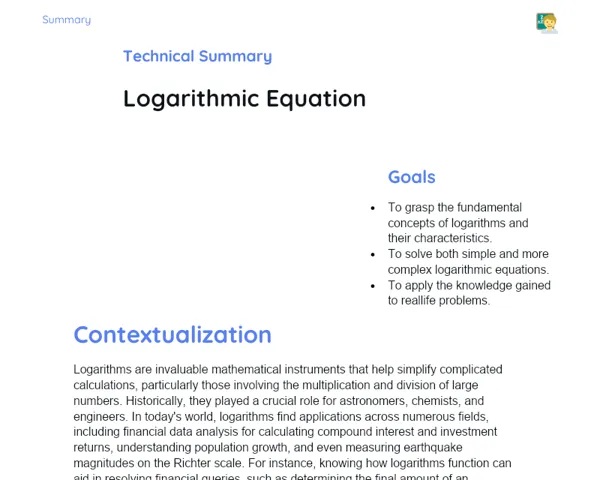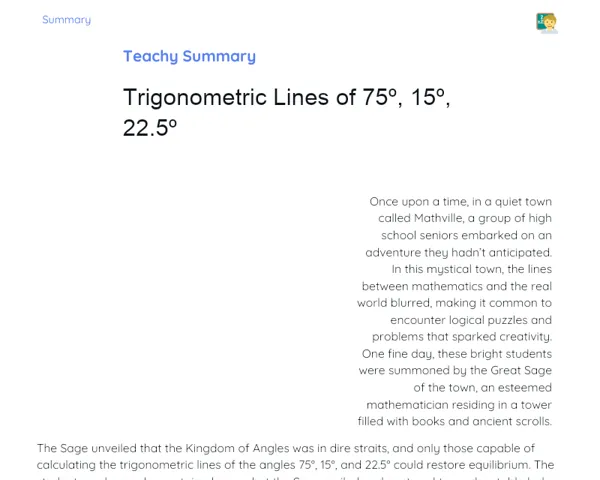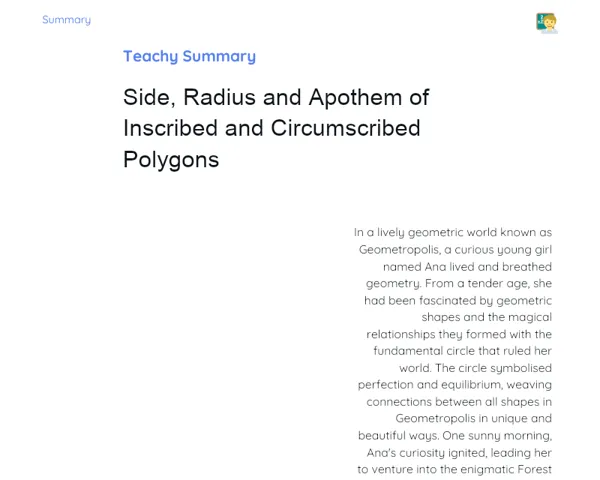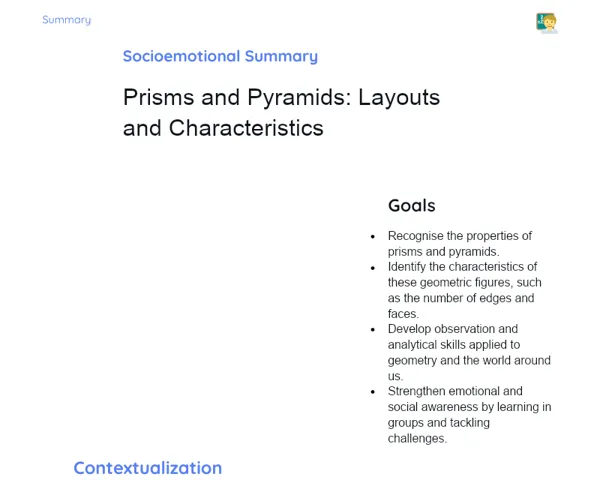Socioemotional Summary Conclusion
Goals
1. Understand the significance and practical uses of the metric and imperial systems.
2. Learn how to convert units between the imperial and international metric systems.
3. Develop skills to tackle mathematical problems involving units from the imperial system.
Contextualization
💡 Did you know that while people in the United States measure their height in feet and inches, most of the world, including us in South Africa, uses metres and centimetres? Knowing how to convert these units is incredibly useful! Imagine you're travelling and need to understand distances or measurements in another country. Mastering both systems can make your life a lot easier and prepare you for any situation! 🚀🌍
Exercising Your Knowledge
Metric System
The Metric System is the unit system used by most countries globally. It’s based on multiples of ten, making it easy to use and understand. For instance, each basic unit can be divided or multiplied by 10 to create subunits (like decimetres, centimetres, millimetres). This structure simplifies calculations and conversions, making it extremely beneficial in scientific, industrial, and daily contexts.
-
📏 Based on Units of 10: The Metric System uses multiples of 10, making conversions quick and straightforward.
-
🌍 Global Use: It's used by nearly every country, apart from a few like the United States.
-
📐 Common Units: Meters (m) for length, litres (L) for volume, and grams (g) for mass.
Imperial System
The Imperial System is primarily used in the United States. It’s based on historical units that have developed over centuries. These units don’t follow a decimal base, which can make conversions trickier. However, it’s commonly used for measuring heights, fuels, and distances on roads.
-
📜 Historical Basis: The Imperial System has its roots in traditional and historical units.
-
🇺🇸 Use in the United States: Despite its limited global adoption, it remains the standard in the U.S.
-
📏 Common Units: Includes inches (in), feet (ft), miles (mi), and pounds (lb).
Conversions Between Systems
Converting between the Metric and Imperial systems is essential for effective communication and accuracy in international contexts. Knowing these conversions can assist you in practical situations, like calculating ingredients in foreign recipes or understanding distances while travelling.
-
💡 Importance of Conversion: Vital for precise communication in a global setting.
-
📖 Conversion Formulas: Example - 1 inch is approximately 2.54 cm; 1 foot is approximately 0.3048 m.
-
🛠 Practical Applications: Utilised in recipes, travel, scientific studies, and much more.
Key Terms
-
Metric System: A system based on multiples of ten.
-
Imperial System: A traditional measurement system primarily used in the U.S.
-
Conversion: The process of transforming one unit of measurement into another.
For Reflection
-
🎓 How did you feel discovering something used by nearly everyone around the globe? What emotions did it stir in you?
-
✈️ Think of a situation where knowing both measurement systems would ease your life (for instance, on holiday). How might this affect your emotions and social skills?
-
📝 Have you ever felt lost when confronted with unfamiliar measurements? How can mastering these conversions alleviate that confusion and bolster your self-assurance?
Important Conclusions
-
📊 We recognise the importance of the metric and imperial unit systems and their practical uses in our everyday lives.
-
💡 We've learned how to convert units between the imperial and international metric systems through various formulas.
-
🤖 We developed skills to solve mathematical problems involving units from the imperial system.
Impacts on Society
💡 Knowing how to convert measurement units can simplify your life and enhance practicality. For example, if you're travelling, understanding distances or measurements in a foreign country is invaluable. Since most of the world utilizes the metric system while the U.S. uses the imperial system, this skill allows you to adapt seamlessly to diverse situations and cultures, improving your effectiveness and independence.
📚 Moreover, mastering unit conversions is crucial across various professions, including engineering, science, and even cooking. This skill equips you to tackle challenges and resolve issues efficiently, boosting your confidence and competence in both everyday and professional scenarios.
Dealing with Emotions
📖 To manage your emotions while studying unit conversions, let’s implement the RULER method. First, recognise when you’re feeling overwhelmed or uncertain in your studies. Understand that these feelings are normal, particularly when learning something new and challenging. Label your emotions accurately, such as 'frustration' or 'curiosity', and express these feelings to a friend or in a journal. Lastly, regulate your emotions by taking breaks, practising deep breathing, or envisioning a calming space, as we've discussed in class. This approach will assist you in maintaining calmness and focus during your studies, making the learning experience more enjoyable and effective.
Study Tips
-
📖 Practice daily: Allocate a few minutes each day to practice unit conversions. This will improve your recall of the formulas and boost your confidence.
-
👥 Study in groups: Share experiences and clarify doubts with peers. Teaching someone else can be a fantastic way to reinforce your own knowledge.
-
💡 Use additional resources: Videos, online exercises, and educational apps are excellent tools to deepen your understanding and make studying more engaging and enjoyable.



